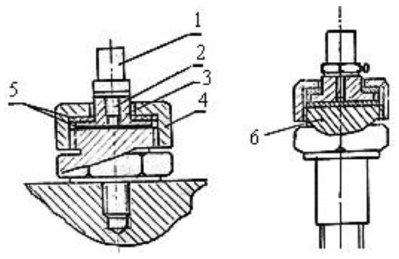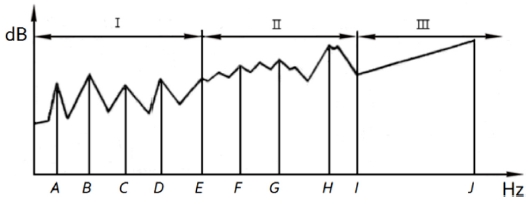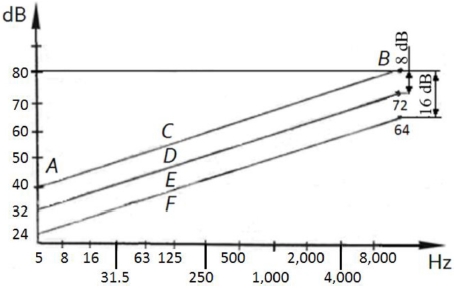
Substantiating the Criteria for Assessing the Quality of Asynchronous Traction Electric Motors in Electric Vehicles and Hybrid Cars
 ; Andrii Hnatov2 ; Vladimir Dvadnenko2 ; Svitlana Ponikarovska2
; Andrii Hnatov2 ; Vladimir Dvadnenko2 ; Svitlana Ponikarovska2
Copyright © The Korean Society for Precision Engineering
This is an Open-Access article distributed under the terms of the Creative Commons Attribution Non-Commercial License (http://creativecommons.org/licenses/by-nc/3.0) which permits unrestricted non-commercial use, distribution, and reproduction in any medium, provided the original work is properly cited.
Abstract
The aim of the study is to create a method for selecting an asynchronous traction electric drive for an electric vehicle that enable the assessment of necessary technical, environmental and operational qualities. When choosing an electric motor for a traction electric drive, the methods for calculating electric machines, reducing the vibrations and electric drive theory were used. The economic and environmental characteristics of the car was analyzed and the use of a traction drive was deemed an effective solution to this problem. The analysis of advantages and disadvantages in traction electric drive were assessed and it was proved that an asynchronous frequency-controlled electric motor is well suited for a traction electric drive. This facilitates the minimization of the size and weight of the entire vehicle. To improve the reliability and service life of electric motors operating in automobiles with high rotational frequencies, a proposal to evaluate the quality of traction electric motors by the level of vibration in the frequency range of 5-10,000 Hz was made. For this study, three classes of vibration norms are offered and the means to achieve them are examined and the recommendations not to exceed them in electric and hybrid vehicles were determined.
Keywords:
Electric car, Electric motor, Vibration level, Vibration reduction1. Introduction
Modern society is facing a paradox. Developing technology, automation, robotization and enhancement of technological processes, along with the benefits, have led to huge environmental problems, as well as to the depletion of natural resources. One of the ways to solve these problems is the use of energy-saving technologies in all existing areas, and, in particular, in the field of transport.1-4
There is a continuously growing demand for environmentally friendly means of transport all over the world, especially in large cities and metropolises.5-8 This is due to the fact that the operation of the vehicle in urban environment is characterized by the “random nature of the load on the vehicle power unit. Namely: arbitrary alternation of the modes of acceleration, braking, driving at steady speed, short stops (congestion, traffic lights, intersections), overcoming ascents and descents.9 Under these conditions, vehicles with internal combustion engines, unlike the vehicles with traction electric drives,10-12 work in transition modes with high specific fuel consumption and high levels of harmful emissions for a considerable part of time. The city electric car works practically with a constant change of control actions on automatic control systems (ACS) interacting with an electric machine, various sensors, a battery, frequency converters and voltage converters. Modern ACS in the drive can reduce the adverse effects of transients on the electric vehicle. In addition, the possibility of recuperative braking using an electric machine makes possible to return some part of the energy to the traction battery, thereby improving efficiency, significantly reducing both heating and wear of brake pads, brake discs or brake drums.9 Under these conditions, the choice of the type of traction motor, which meets modern, often contradictory requirements in the best possible way, is of essential importance.13,14
Analysis of existing developments has showed that the following practical types of traction motors15-19 have come into common use in electric drive of electric vehicles and hybrid cars:
- permanent magnet motors (PMM);- permanent magnet motors with electromagnetic excitation (PMMEE);- asynchronous frequency-controlled motors (AFCM).
Earlier the traction collector DC motors (permanent-magnet synchronous motor) were widely used. Currently, they cannot compete successfully with the above-mentioned electric motors. Comparison of the advantages and disadvantages of these engines with regard to operational requirements gives the following results. PMMs have the highest efficiency. PMMEE’s and AFCM’s efficiency is slightly lower, their weight and dimensional parameters are worse than those of the PMM, however, a number of advantages of PMMEE and AFCM make their use reasonable and competitive.
AC electronic motors (AEM) are used in most modern hybrid cars and electric vehicles.20 AEM is a synchronous electric machine equipped with rotor position sensors. It is powered through an inverter based on modern power electronic switches and is controlled by a microcontroller using at least two ACS: by the position of the rotor and by the limiting phase current. Sometimes ACS by angular velocity is added (cruise control). Synchronous electric machines are with excitation from permanent magnets and with electromagnetic excitation. AEM on the basis of a synchronous electric machine with high-coercive permanent magnets on the rotor are the most widely used. Such AEMs have higher efficiency and better electrical characteristics. However, they are very expensive. In addition, the disadvantage of such AEM is a small range of rotor speeds. Since the ideal idle speed is proportional to the armature supply voltage and is inversely proportional to the rotor flux excitation magnetic flux, an increase in the supply voltage is required to expand the speed range when it is impossible to control the magnetic flux. In some relatively small limits, vector control can weaken the excitation flow in such electric motors, which makes it possible to expand the range of operating speed, but this leads to inefficient use of electricity and lower efficiency.9
Synchronous electric machines with electromagnetic excitation (PMMEE) are relatively inexpensive and widespread, since they are used as alternators, specifically as automobile generators. They are also used as traction in modern electric vehicles.21,22 This type of electric cars was chosen to manufacture the AEM of a traction electric drive of the base car, re-equipped in a hybrid car.9 Despite somewhat worse efficiency values, in addition to the low cost, AEM based on a synchronous electric machine with electromagnetic excitation, have several other important advantages:
- the ability to organize the regulation of rotations in the second zone of the electric motor by controlling the excitation flow. This enables to extend the working range of rotor speeds at a fixed supply voltage. Thus, it will increase the gear ratio from AEM to the drive wheels. As a result, the starting torque can be increased and the desired maximum speed can be maintained;- securement of a significantly lower braking torque in the de-energized state, which improves the idling of an electric vehicle or a hybrid car;- the possibility of simple and effective control of AEM in generator mode during recovery by adjusting the relatively small excitation current;- the ability to work without overvoltage of power electronics at an angular speed far exceeding the angular speed of an ideal idling. This mode is necessary in hybrid cars during the AEM forced idle when driving a car with the help of internal combustion engines at high speed. AEM with permanent magnets has an EMF of rotation proportional to the angular velocity, and, therefore, it must have power switches with a 3-4 times higher operating voltage than the voltage of the traction battery. This causes a significant increase in the cost of the inverter and a decrease in its efficiency. An overvoltage does not occur in AEM with electromagnetic excitation when the current of the excitation winding is turned off, therefore, the operating voltage of the keys should only be about 20% higher than the operating voltage of the traction battery.9
AFCM has all the advantages of PMMEE over PMM. At the same time, the asynchronous electric machine has a simpler and more technological design; besides, the required angular velocity sensor of the AFCM is simpler and cheaper than the absolute position sensor of the rotor, which is necessary for the PMM and PMMEE traction. A more complex vector control algorithm of AFCM complicates the microprocessor control, but at present it does not cause a significant increase in the price of the electric drive. These arguments make AFCM one of the most attractive to be used as a traction motor of electric vehicles and hybrid cars.
Due to the complicated conditions of operation of the traction electric drive, providing minimal vibrations and noises is an important task. Therefore different researchers study the causes of arising and search for the ways to minimize this problem.19,23 In work23 the way to reduce electromagnetic vibrations is given as exemplified in the improved three-phase engine Y2-200L2-6. The authors of article24 developed an imitation model of transmission on the base of asynchronous engine with constant magnets with vector control. In order to improve the feedback on speed and reliability of the engine controller the authors developed a fuzzy self-tuning PID controller. This will help reduce torque ripple caused by load change and the change of control signal. In article19 the impact of vibration and noise on the asynchronous engine with a squirrel-cage induction machine with a double skewed rotor is investigated. It was determined that the engine is noiseless when the vibration frequency and the frequency of electromagnetic power waves keep away both from the resource mode and from the stator core own frequency.
The purpose of this study is to create a method for selecting an asynchronous traction electric drive of an electric vehicle or a hybrid vehicle, which allows to obtain the necessary technical, environmental and operational qualities of a vehicle, as well as to study the vibration characteristics of a high-speed asynchronous electric motor in such an application.
In the course of the research, approaches and methods of analysis and synthesis of complex technical systems were used. When choosing an electric motor for a traction electric drive and its evaluation, the methods of calculating electric machines and electric drive theory were used. In addition, the ways to reduce vibrations of an asynchronous electric motor were considered. Experimental studies were conducted in the “Vibroacoustic Laboratory” of Kharkiv Electromechanical Plant together with Kharkiv National Automobile and Highway University.
2. Choosing Electric Motor for a Traction Electric Drive
When designing traction electric motors different criteria of optimality are used. For a traction engine of an electric vehicle or a hybrid vehicle, the main criterion for optimality may be minimum losses or maximum efficiency. This is due to the fact that the increase in efficiency directly affects the increase in the mileage of an electric vehicle during one discharge cycle of a battery (AB). When this happens the most AB energy is used for efficient work. The ability of the electric motor to provide recuperative braking and minimal resistance to rotation in the de-energized state helps to achieve this.13 AFCM meets these criteria quite well.
It should be noted that the efficiency of PMM is slightly higher than that of the AFCM, but the resistance to rotation in the de-energized state of the AFCM is substantially smaller. Electrical braking with energy recovery in AB is most easily and efficiently achieved in PMMEE. In AFCM, the implementation of this mode requires more complex control algorithms.
Depending on the purpose of the electric drive, the regulation of the rotational speed and the change in load of the AFCM is performed by vector or scalar control. In the static (steady-state) mode of operation of the drive, both of these control options are almost equivalent. But vector control provides the optimal mode of operation of the electric motor not only in stationary modes, but also in transient (dynamic) modes. This prevents the transition to a new optimal mode with sudden changes in load or angular velocity, and, in addition, protects electronic power keys from overvoltage and current overloads.25-27 In a traction drive of an electric vehicle or a hybrid vehicle, the duration of transient electromagnetic processes, is, as a rule, much less than the duration of transients of the vehicle motion mode. In most cases it makes possible to consider the traction drive as a static object.28
A traction asynchronous motor with a short-closed rotor in an electric vehicle combines a number of advantages even when operating in the scalar mode of a frequency-voltage controller. Namely: it is the simplest electric machine of alternating current; it has good starting and adjusting properties of a DC motor. But since there is the possibility of separate control of the moment and the field in the asynchronous motor with the vector control, this allows flexible adaptation of the mechanical characteristics to the motion conditions. Therefore, the vector control is more promising in the asynchronous traction drive.28
The values of the components of the stator voltage vector in a fixed three-phase coordinate system (phase voltages) are formed using pulse-width modulation (PWM). The PWM frequency range is selected based on the minimum loss in the ferromagnetic material and power electronic switches. The PWM algorithm (vector PWM) in modern AFCMs ensures maximum use of the DC source voltage, which allows reducing phase currents and, therefore, heat losses in phase windings. With vector PWM, the phase voltage vector is implemented using base vectors in a three-phase coordinate system.25-27
Along with this, there are also some important criteria for selecting an electric motor, namely the minimum cost, minimum weight, minimum amount of conductor and ferromagnetic materials. This can be achieved by increasing the working speed of the electric motor. In electric vehicles and hybrid cars, electric motor operation usually takes place in a wide range of electric motor revolutions. The asynchronous electric machine has a simple and robust rotor design, which allows extending the operating range to high revolutions and thereby optimizing the AFCM according to the specified criteria. Since the task of providing minimal vibrations and noises becomes more complicated due to the difficult operating conditions with the increase in the traction motor rotation, we will consider in more detail the issues of vibration resistance of the AFCM.
3. Investigating the Vibration Resistance of Asynchronous Electric Motor
The vibration characteristics of electric motors are taken as a criterion for assessing the quality of electric motors, since they are the main indicator of their design and technology perfection.
Vibroacoustic diagnostics provides a solution of 80% of diagnostic problems for most machines, and the results of the analysis and forecast are completely reliable in more than 9 out of 10 cases. The level of vibration of the motor makes possible to determine the defects of design and production, and to determine their faults in operation.13 The high versatility, sensitivity and selectivity of vibration signals allow the diagnosis of individual defects and the interrelation of mechanical, magnetic and electrical systems. The properties of vibration signals to react quickly to a change in the technical state of electric motors enables to observe and compare in real time the response of all components of the structural, functional and dynamic state of electric motors to the changes of design, manufacturing technology and assembly, work processes, adjustment work, correlation dependence of motor defects.
3.1. Equipment and Instruments for Measuring Electric Motor Vibration
Three-octave vibration acceleration levels and narrow-band vibration spectra with a bandwidth of 3-10% in the range from 5 Hz to 10 kHz in idle mode and under load are adopted as the basic vibration characteristics of the AN type electric motors of 8, 9 and 10 dimensions.
Experimental studies were conducted in the “Vibroacoustic Laboratory of Kharkiv Electromechanical Plant together with KhNAHU.
Description of the experimental study. The vibration levels of the AN electric motors were determined in decibels by the maximum mean square values of the vibrational acceleration on a special stand with a vibroacoustic decoupling, eliminating the influence of interference at the motor vibration measurement points (Figs. 1 and 2). The acceleration a, equal to 3104 ms2 is taken as the relative zero level of vibration.

Scheme of the vibroacoustic chamber stand of the electric motors under study in the load and idle mode: 1: load balancing electric machine; 2: supports of drive shaft of the balancing machine; 3: soundproofing of all walls, ceiling and floor of the muffled chamber; 4: cardan drive shaft; 5: electric motor under study; 6: vibration isolator of АKSS type; 7: mounting plate; 8: base of the vibroacoustic isolation; 9: walls of the building; 10: air acoustic isolation; 11: walls of the vibroacoustic chamber
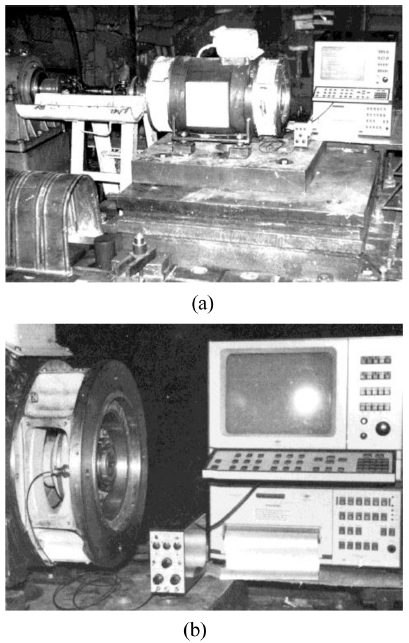
Stand of the vibroacoustic chamber for engine testing: (а) general view and (b) experimental equipment
The engine under study in the nominal load mode was connected with the loading machine by the crankshaft.
Vibroacoustic isolation devices of the test stand provided noise levels in the entire frequency range of the measured vibration of a running engine by 8-10 dB lower. Interference levels were determined at vibration measurement points on the inactive engine when all auxiliary stand mechanisms and devices for engine operation were turned on.
The change in engine vibration was measured after its 30 minutes preliminary operation at idle speed.
Experimental equipment, Fig. 2(b):
- type 2120 frequency analyzers by Bruel&Kjaer (Denmark);- type 2130 frequency analyzers by Bruel&Kjaer (Denmark);- type 2133 frequency analyzers by Bruel&Kjaer (Denmark);- type 4376 vibration transducer by Bruel&Kjaer (Denmark);- type 2635 charge amplifier by Bruel&Kjaer (Denmark).
The method of engine mounting on the AKSS type vibration insulators, points and directions of measurements of the flanged electric motor vibration are shown in Fig. 3
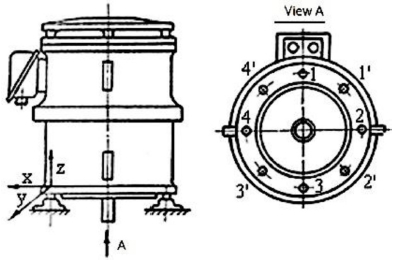
Methods of mounting an electric motor on the vibration isolators and points of vibration measuring: 1, 2, 3, 4: points of vibration isolators mounting; 1', 2', 3', 4': points of vibration measuring; x, y, z: directions of vibration measuring
Type 4376 vibration converter was installed on the screw head that secures the motor to vibration insulators. The vibration transducer was fastened with a special nut (4, Fig. 4) and a specified tightening force. Such fixation of the vibration transducer excluded the influence of the fixation method on the accuracy of vibration measurements excited by an electric motor.
3.2. Methods to Evaluate the Quality of Asynchronous Motors by Vibration Characteristics
There are the standards for regulation of vibration levels of electric machines that decrease reliability and increase machine wear. The standards aim at reducing the harmful effects of high vibration levels on the structure.
The main disadvantage of these standards for the regulation of vibration is limitation of vibration levels at individual frequencies, parts of the spectrum or according to a general level, and not across the whole spectrum of excited vibrations. This does not enable to evaluate by the vibration levels the impact of all existing sources on the technical condition for finishing the design and technological processes of manufacturing electric machines. Regulating vibration across the spectrum allows controlling the quality of production and changes in the technical condition of machines during operation maintenance.
Asynchronous low-noise AN-type engines with the power from 25 to 90 kW of mass production high technology were taken as a basic sample of the engines under study. The direct line of permissible vibration levels that do not have an accelerated effect on engine wear and damage is taken as the initial values of their vibration, considering which the effectiveness of the changes, introduced in their design to reduce vibration, was estimated.
The statistical processing of the vibration spectrograms of serial modified electric motor designs included determining the minimum, maximum and average arithmetic and root-mean-square deviations from their measurement average. The average vibration values of the sampling of at least 20 engines of each type and version were taken as the estimated vibration levels of the studied engines. The level of technology for the production of electric motors was determined by the variation of the values of the minimum and maximum levels of vibration. The choice of constructive solutions to reduce the vibration of electric motors was made by the sources of high levels of vibration excited by structural and technological defects of the studied engines with the power of 380 V from the mains and frequency of 50 Hz. Power supply of electric motors from the 380 V network and a frequency of 50 Hz is taken to facilitate the practical implementation of acceptance tests at the enterprises manufacturing them.
4. The Results of Experimental Research of Electric Motor Vibration
4.1. Determining the Defects of Electric Motors
The analysis of more than 200 vibration spectra of electric motors of the AN type of flanged vertical execution and horizontal on lugs made possible to determine the main defects of electric motors (Fig. 5) by sources of vibration, develop a typical spectrum of vibrations of electric motors (Fig. 6) and the ways to reduce vibration.
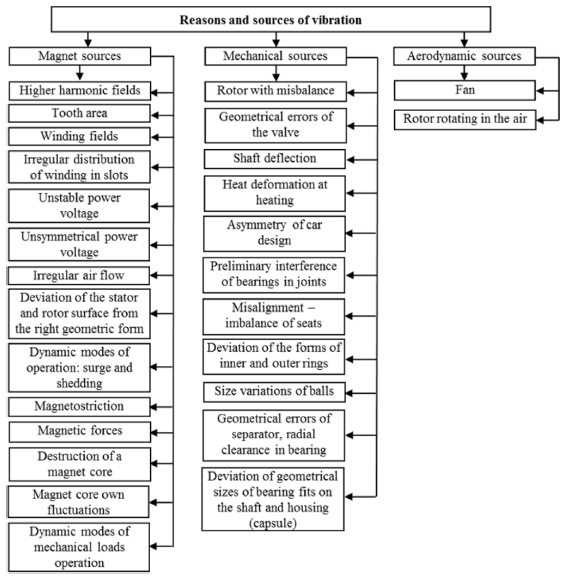
Causes and sources of vibration of electromagnetic, mechanical and aerodynamic origin of the asynchronous electric motor
The main sources of vibration excited by engine defects are shown in Fig. 6 as peaks from A to J, and their main groups – frequency bands І, ІІ, ІІІ. The third group of sources of vibration-exciting electric motors is not standardized.
Diagnosis of mechanical and magnetic sources of vibration of the AN type engines in the frequency ranges is based on the isolation and analysis of discrete components of high vibration levels, Fig. 6:
- peak A – on the frequency of rotation from the imbalance of the rotating parts;- peak B – on the double rotation frequency;- peak C – on the power frequency;- peak D – on the double frequency of power;- area E – a wide band of the spectrum of maximum vibration levels excited by rolling bearings;- peak F – on the frequencies excited by aerodynamic forces;- peak G – on the frequency excited by a tooth field;- area H – a wide band of the spectrum of the maximum levels of vibrations excited by mechanical and magnetic sources, and the appearance of resonant phenomena of the parts and assemblies;- area I – an increase in vibration levels caused by deterioration of lubrication parameters and wear of rolling surfaces;- area G – vibration levels stipulated by resonance phenomena, friction and bearing wear forces (I = 20 kHz, K = 30 kHz).
The results of statistical processing of vibration characteristics of 20 production engines brought to the requirements of technical documentation and manufacturing technology at the example of a 90 kW flange engine AN 92-2 are presented in Fig. 7. This is the maximum achieved possibility of reducing the vibration of the existing design and mass production technology. A wide variation of vibration levels (up to 26 dB, Fig. 7), excited by bearing units, imbalance, misalignment and distortions of parts and magnetic sources (the area of vibration spectra is 1250 Hz) – up to 16 dB – indicates that the existing design and production technology does not provide accuracy and stability of parameters. And large values of mean square deviations of vibration levels of engines and engines with low vibration levels (2, Fig. 6) indicate the possibility of improving (changing) the design and production technology.
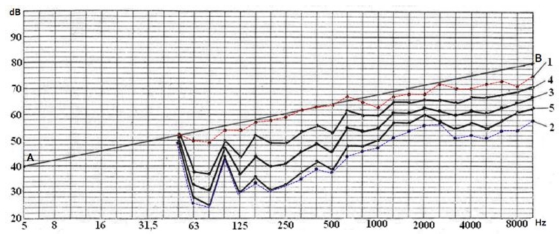
Spectrograms of vibrations of electric motor АN92-2 М362 in the idle mode: 1, 2: maximum and minimum values of the levels; 3: average values of the levels; 4, 5: mean square deviation of the levels
To further improve the quality (reliability and resource) of electric motors, the achieved spectral values approximated by the direct line AB (Fig. 7), with a difference of 40 dB vibration levels at 5 Hz and 80 dB at 10,000 Hz are taken as the baseline vibration levels. The inclination of the direct line AB with a difference of 40 dB between the frequency of 5 Hz and the frequency of 10,000 Hz is an equal resource requirement for vibration levels excited by all defects of the electric motor (Fig. 6).
A known dependence is taken as the further improvement of the quality of engines. Reducing vibration by 8 dB (in our case, below the direct line AB) indicates the transition of the machine to another higher class of technical condition. On this basis, classes D, E, F of the norms of electric motor vibration at idling and under load with a rotational speed of up to 3000 min-1 have been developed (Fig. 8).
Class D vibration levels should not exceed the direct line AB; Class E must not exceed the line with vibration levels of 32 dB at the frequency of 5 Hz and 72 dB at the frequency of 10,000 Hz. Class F vibration levels should not exceed the direct line of 24 dB at the frequency of 5 Hz and 64 dB at the frequency of 10,000 Hz. Engines with vibration levels higher than the direct AB are not recommended for use in electric vehicles because of high vibration levels that reduce reliability, accelerate wear processes13 and can have a harmful effect on humans and the environment.
Evaluation methods based on the vibration characteristics of the resource of machines13 allow, based on the achieved resource of class D electric motors, to predict twofold increase in the resource of class E electric motors, and of class F – threefold.
To achieve the vibration levels of electric motors of class E, excited by magnetic sources (Figs. 6 and 7), the studies have been conducted to reduce the vibrations excited by the main sources: an air gap between the rotor and the stator; the shape of the rotor magnetic core slot; the effect of induction in the gap of the rotor-stator magnetic cores; the influence of power quality of the asynchronous motor power.
Development of constructive and technological solutions concerning reduction of vibrations of electric motors to class E and F, excited by mechanical sources, bearing joints, misalignments and distortions of parts, from the method of mounting the electric motor to the technology of assembling electric motors, will be considered in the other article.
4.2. Investigating the Effect of the Gap between the Magnet Core of the Stator and Rotor on Vibration Characteristics of Electric Motors
The studies of the effect of the gap between the rotor and stator magnetic cores on vibration levels were performed on 2, 4, 6 and 8-pole asynchronous motors with the power from 20 to 90 kW, of horizontal and vertical design on lugs and flange.
It was established that the value of the optimal gap depends on the polarity, the size, the number of slots of the rotor and stator, the stiffness characteristics of the oscillating system of the rotor-stator engines.
With the increase in the gap between the rotor and stator magnetic cores, the changes occur in vibrations of the rotor and stator field harmonics, which, at a certain gap size, ratios of the numbers of rotor and stator slots, are optimal for a specific engine design. Therefore, an increase in the gap of 0.24-0.4 mm may not always lead to a decrease in vibration levels of the engines.
The reduction of vibration levels at the tooth frequencies depends on the magnitude of the mechanical components in the magnetic field. Vibrations caused by harmonics of the magnetic field, for example, the presence of splines on the surface of the magnetic core, decreases to a greater extent with increasing gap than vibrations caused by a perforated field.
The optimal sizes of the gap between the rotor and stator magnetic cores depending on the polarity and size of specific engines are determined.
For bipolar engines of dimension 8, the optimum clearance is 1.2 mm, and the increase in the size of the electric motor causes the increase in the value of the optimum clearance by 0.05-0.1 mm by the dimension.
4.3. Effect of the form of the Rotor Magnet Core Slot on Vibrational Characteristics of Electric Motors
In the general case, magnetic vibrations can be reduced by a successfully selected ratio of stator and rotor slot numbers, a correctly selected air gap between the stator and rotor magnet cores, an incidence of the rotor slots, a decrease in the eccentricity of the air gap and other design and technological solutions.
One such solution is changing the shape of the rotor slot. Trapezoidal, T-shaped and arched forms of the closed slots of asynchronous 2, 4, 6, 8-pole motors were investigated.
The slot shapes of the tested rotors are shown in Fig. 9.
In the slot of the arched shape, the inclination of the arc was changed from right to left along the length of the slot every 20 mm.
Determination of the vibration characteristics of electric motors was carried out in idle and nominal load modes, in mounting versions: horizontal on lugs, vertical on lugs, and vertical on the flange.
The studies have shown that the slot shape of the rotor magnet package has a significant effect on the vibration levels of electric motors in the magnetic frequency range and a weak effect on other parts of the spectrum from frequency speed up to 1000 Hz. It was not possible to isolate the magnetic component from the influence of the rotor slot shape on the vibration levels in this part of the spectrum, since the variation in vibration levels is determined by mechanical vibrations: bearing quality, manufacturing technology and assembly of rotor parts and bearing joints.
For a two-pole electric motor with a mass of 830 kg, a power of 90 kW at idle and nominal load, the vibration levels of an electric motor with an arched slot of a rotor in the area of tooth frequencies are 7-8 dB lower than for a rotor having a t-shaped slot and 14-15 dB lower than vibration levels of a motor with trapezoidal slot. Such reductions in vibrations of magnetic origin are placed in vibration levels of class E and F of the upper range.
For a four-pole electric motor of the same mass, with a power of 18.5 kW, the vibration levels of an electric motor with an arched rotor slot are 6-8 dB lower compared to rotors with t-shaped and trapezoidal slots.
A six-pole electric motor with a mass of 1300 kg and a power of 75 kW with an arched rotor slot has vibration levels in the tooth frequencies 9-10 dB lower compared to rotors having a trapezoidal and T-shaped slots at idle and 5-7 dB – in the nominal load mode.
An eight-pole electric motor of the same mass and power of 30 kW with an arched rotor slot has vibration levels in the magnetic frequency range 4-7 dB lower compared to rotors having a t-shaped and trapezoidal slots.
Similar results were obtained for other types of electric motors of various mounting styles.
4.4. Effect of Induction in the Gap of Rotor-Stator Magnet Cores on Vibration Characteristics of Electric Motors
The studies of the effect of induction in the air gap between the rotor and stator magnetic cores and in the back of the stator on vibration characteristics were carried out on 2, 4, 6 and 8-pole mounted asynchronous motors by comparing the spectral components of vibration of engines with different induction values. Induction was reduced by replacing the stator winding.
The disadvantage of this method of research is the need to reassemble the electric motor, which caused an error in the test results. Therefore, the analysis of the effect of induction magnitude on the vibration characteristics of electric motors was carried out in the area of tooth frequencies, where the influence of reassembly on the vibration levels is minimal.
The tests of electric motors were carried out in three mounting versions: horizontal on lugs and vertical on lugs and on the flange. The tests were carried out in the idle mode and in the nominal load.
Technical characteristics of the engines are given in Table 1.
Vibration measurements were carried out on the heads of the screws that secure the electric motor to the stand through the shock absorbers (Figs. 3 and 4). Vibration levels in the one-third octave frequency bands were determined in decibels by the mean square value of the vibrational acceleration. The vibration was measured in the direction perpendicular to the plane of attachment.
The studies have shown that a decrease of 25-40% in induction results in reduction of vibration levels at tooth frequencies up to 7 dB. The magnitude of reduction depends on mounting of the electric motor. It is higher when the motor is mounted on lugs (both vertically and horizontally) and weaker on the flange.
For a 2-pole motor, it is 7-8 dB when mounted on lugs and 2 dB when mounted on the flange.
For a 4-pole motor, these values are 4 dB and 1 dB, respectively.
For a 6-pole electric motor, when mounted horizontally on lugs, the reduction is 6 dB, when mounted vertically on lugs – 7 dB and 4 dB when mounted vertically on the flange.
For an 8-pole motor, the reduction is 5 dB when mounted on lugs and 2 dB when mounted on the flange.
4.5. Effect of the Quality of Electric Energy of Asynchronous Engines Power on the Vibration Levels at 100 Hz
The effect of distortion of the voltage wave form and voltage imbalance of a 50 Hz network frequency on the vibration levels of 2, 4, 6 and 8-pole motors of horizontal execution on lugs with the power from 30 to 73 kW, 380 W supply voltage is considered.
It is shown that when measuring the sinusoidal voltage distortion factor up to 14%, the third harmonic component of the voltage increases, the fifth and seventh harmonic components of the current decrease and the motor vibration levels at a frequency of 100 Hz remain almost unchanged. When the supply voltage is unbalanced from 0.13 to 5%, the vibration levels of electric motors increase by 11-14 dB at a frequency of 100 Hz in the Z axis direction and by 13-18 dB in the Y axis.
The studies show that determination of the vibration characteristics in the acceptance tests of engines and their operation should be carried out when the difference of the supply network line voltage is not more than 4 V.
5. Conclusions
The choice of electric motors for electric vehicles and hybrid cars should be considered taking into account the entire power system and the operating conditions of the vehicle. Traction collector DC engines are impractical to use in new designs of electric vehicles and hybrid cars, since their high cost and operating costs for maintenance can not be compensated by the somewhat lower cost of the power electronic control unit. The use of asynchronous frequency-controlled electric motors in a wide range of rotational frequencies enables to minimize the weight and dimensions of the electric motor, as well as to reduce the cost of maintenance in comparison with collector motors.
It was determined experimentally that the level of vibration excited by magnetic sources is decreased by:
- the air gap between the rotor and the stator. Its optimal size depends on polarity, size, number of rotor and stator slots, rigidity characteristics of vibration system of rotor-stator engines;- the shape of the groove of the rotor magnetic circuit. It has a significant impact in the field of magnetic frequencies and a weak effect on the other parts of the spectrum from the frequency of rotation to 1000 Hz;- induction in the gap of the rotor-stator magnetic circuit. A 25-40% reduction of induction causes reduction of vibration levels at the tooth frequencies up to 7 dB. The magnitude of the reduction depends on the mounting performance of the electric motor. It appears stronger when mounting the motor on the legs and weaker on the flange;- quality of the electric power supply of the engine. Determination of vibration characteristics during acceptance tests of engines and their operation should be carried out at a not more than 4 V difference of the line voltage of the supply network. The distortion factor of the sinusoidal voltage should not exceed 14%.
The classification of electric motors with a capacity of up to 90 kW by the level of vibration has been developed:
- Class D. At a frequency of 5 Hz the noise level is ≤ 40 dB; at a frequency of 10,000 Hz the noise level is ≤ 80 dB;- Class E. At a frequency of 5 Hz the noise level is ≤ 32 dB; at a frequency of 10,000 Hz the noise level is ≤ 72 dB;- Class F. At a frequency of 5 Hz the noise level is ≤ 24 dB; at a frequency of 10,000 Hz the noise level is ≤ 64 dB.
Electric motors with a vibration level bigger than 40 dB at a frequency of 5 Hz and 80 dB at a frequency of 10,000 Hz are not recommended for use in electric vehicles and hybrid cars.
This classification is designed to control asynchronous electric motors during acceptance tests.
The developed recommendations and the obtained criteria have been tested and are being introduced in mass production of special-purpose engines. They allow:
- designing asynchronous traction motors for predetermined vibration levels, which increases reliability and service life;- conducting quality control at the production stage;- controlling the technical condition in operation by exceeding the engine vibration level, i.e. transition to another class of technical condition.
Acknowledgments
This work was conducted under the Scientific research “Development of the system of energy saving and electric energy generation for vehicles,” 04-53-17, funded by the Ministry of Education and Science of Ukraine.
CONFLICT OF INTERESTS
The authors declare that there is no conflict of interests regarding the publication of this paper.
REFERENCES
- Patļins, A., Hnatov, A., and Arhun, S., “Safety of Pedestrian Crossings and Additional Lighting Using Green Energy,” Proc. of 22nd International Scientific Conference, pp. 527-531, 2018.
- Lauth, E., Raab, A. F., Teske, P., Göhlich, D., and Strunz, K., “Smart Grid Integration of Electric Buses: Implementation of a Uni-and Bidirectional Charging Infrastructure,” Proc. of the 31st International Electric Vehicle Symposium, 2018.
-
Arhun, S., Hnatov, A., Dziubenko, O., and Ponikarovska, S., “A Device for Converting Kinetic Energy of Press into Electric Power as a Means of Energy Saving,” Journal of the Korean Society for Precision Engineering, Vol. 36, No. 1, pp. 105-110, 2019.
[https://doi.org/10.7736/KSPE.2019.36.1.105]

- Hnatov, A., Arhun, S., Dziubenko, O., and Ponikarovska, S., “Choice of Electric Engines Connection Circuits in Elecric Machine Unit of Electric Power Generation Device,” Malesi Journal of Electrical Engineering, Vol. 12, No. 4, pp. 85-93, 2018.
-
Hnatov, A., Arhun, S., Ulyanets, O., and Ponikarovska, S., “Ultracapacitors Electrobus for Urban Transport,” Proc. of the IEEE 38th International Conference on Electronics and Nanotechnology, pp. 539-543, 2018.
[https://doi.org/10.1109/ELNANO.2018.8477449]

-
Bakker, S., Dematera Contreras, K., Kappiantari, M., Tuan, N., Guillen, M., et al., “Low-Carbon Transport Policy in Four Asean Countries: Developments in Indonesia, the Philippines, Thailand and Vietnam,” Sustainability, Vol. 9, No. 7, Paper No. 1217, 2017.
[https://doi.org/10.3390/su9071217]

-
Menezes, E., Maia, A. G., and De Carvalho, C. S., “Efectiveness of Low-Carbon Development Strategies: Evaluation of Policy Scenarios for the Urban Transport Sector in a Brazilian Megacity,” Technological Forecasting and Social Change, Vol. 114, pp. 226-241, 2017.
[https://doi.org/10.1016/j.techfore.2016.08.016]

-
Patlins, A., Hnatov, A., Kunicina, N., Arhun, S., Zabasta, A., et al., “Sustainable Pavement Enable to Produce Electricity for Road Lighting Using Green Energy,” Proc. of the Energy and Sustainability for Small Developing Economies (ES2DE), pp. 21-26, 2018.
[https://doi.org/10.1109/ES2DE.2018.8494236]

-
Dvadnenko, V., Arhun, S., Bogajevskiy, A., and Ponikarovska, S., “Improvement of Economic and Ecological Characteristics of a Car with a Start-Stop System,” International Journal of Electric and Hybrid Vehicles, Vol. 10, No. 3, pp. 209-222, 2018.
[https://doi.org/10.1504/IJEHV.2018.097377]

-
Wu, X., Hu, C., and Chen, J., “Energy Flow Chart-Based Energy Efficiency analysis of a Range-Extended Electric Bus,” Mathematical Problems in Engineering, 2014.
[https://doi.org/10.1155/2014/972139]

-
Wang, J., Wang, Q.-N., Wang, P.-Y., and Zeng, X.-H., “The Development and Verification of a Novel ECMS of Hybrid Electric Bus,” Mathematical Problems in Engineering, 2014.
[https://doi.org/10.1155/2014/981845]

-
Castaings, A., Lhomme, W., Trigui, R., and Bouscayrol, A., “Comparison of Energy Management Strategies of a Battery/Supercapacitors System for Electric Vehicle under Real-Time Constraints,” Applied Energy, Vol. 163, pp. 190-200, 2016.
[https://doi.org/10.1016/j.apenergy.2015.11.020]

- Migal, V. and Dvadnenko, V., “Choosing Electric Motors for Electric Cars and Hybrid Cars,” Bulletin of Kharkov National Automobile and Highway University, Vol. 75, pp. 116-119, 2016.
-
Hashemnia, N. and Asaei, B., “Comparative Study of Using Different Electric Motors in the Electric Vehicles,” Proc. of 18th International Conference on Electrical Machines, pp. 1-5, 2008.
[https://doi.org/10.1109/ICELMACH.2008.4800157]

-
Boldea, I., Tutelea, L. N., Parsa, L., and Dorrell, D., “Automotive Electric Propulsion Systems with Reduced or No Permanent Magnets: An Overview,” IEEE Transactions on Industrial Electronics, Vol. 61, No. 10, pp. 5696-5711, 2014.
[https://doi.org/10.1109/TIE.2014.2301754]

-
Emadi, A., Lee, Y. J., and Rajashekara, K., “Power Electronics and Motor Drives in Electric, Hybrid Electric, and Plug-In Hybrid Electric Vehicles,” IEEE Transactions on Industrial Electronics, Vol. 55, No. 6, pp. 2237-2245, 2008.
[https://doi.org/10.1109/TIE.2008.922768]

-
Cornell, E. P. and Lipo, T. A., “Modeling and Design of Controlled Current Induction Motor Drive Systems,” IEEE Transactions on Industry Applications, No. 4, pp. 321-330, 1977.
[https://doi.org/10.1109/TIA.1977.4503414]

-
Yildirim, M., Polat, M., and Kürüm, H., “A Survey on Comparison of Electric Motor Types and Drives Used for Electric Vehicles,” Proc. of the 16th International Power Electronics and Motion Control Conference and Exposition, pp. 218-223, 2014.
[https://doi.org/10.1109/EPEPEMC.2014.6980715]

-
Wang, L., Bao, X., Di, C., and Zhou, Y., “Influence on Vibration and Noise of Squirrel-Cage Induction Machine with Double Skewed Rotor for Different Slot Combinations,” IEEE Transactions on Magnetics, Vol. 52, No. 7, pp. 1-4, 2016.
[https://doi.org/10.1109/TMAG.2016.2539979]

-
Husain, I., “Electric and Hybrid Vehicles: Design Fundamentals,” CRC Press, 2010.
[https://doi.org/10.1201/9781439894972]

- Liu, C., “Sizes and Comparisons of Converters Electromechanical Low Cost and High Availability for Electric Vehicles,” Universitу Paris-Saclay, 2016.
- Daguse, B., “Analytical Modeling for Sizing by Optimizing a Machine Dedicated to a Chain of Hybrid Traction with Dominant Electric,” 2013.
-
Xie, Y., Pi, C., and Li, Z., “Study on Design and Vibration Reduction Optimization of High Starting Torque Induction Motor,” Energies, Vol. 12, No. 7, Paper No. 1263, 2019.
[https://doi.org/10.3390/en12071263]

-
Cao, Z., He, F., Li, H., and Xu, Z., “Research on Torsional Vibration Suppression of Electric Vehicle Driveline,” in: Advances in Green Energy Systems and Smart Grid, Li, K., Zhang, J., Chen, M., Yang, Z., and Niu, Q., (Eds.), Sprigner Singapore, pp. 61-69, 2018.
[https://doi.org/10.1007/978-981-13-2381-2_6]

- Novotny, D. W. and Lipo, T. A., “Vector Control and Dynamics of AC Drives,” Oxford University Press, 1996.
-
Zhang, D. and Huang, T., “Asynchronous Motor Parameter Identification based on Vector Control,” Proc. of the 2nd International Conference on Electrical Engineering and Automation (ICEEA 2018), 2018.
[https://doi.org/10.2991/iceea-18.2018.34]

-
Kusko, A. and Galler, D., “Control Means for Minimization of Losses in AC and DC Motor Drives,” IEEE Transactions on Industry Applications, No. 4, pp. 561-570, 1983.
[https://doi.org/10.1109/TIA.1983.4504256]

-
Struharňanský, Ľ., Vittek, J., Makyš, P., and Ilončiak, J., “Vector Control Techniques for Traction Drive with Induction Machines-Comparison,” Procedia Engineering, Vol. 192, pp. 851-856, 2017.
[https://doi.org/10.1016/j.proeng.2017.06.147]

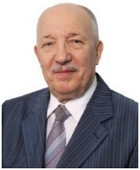
Vasiliy Migal Dr. of Sc., Professor of Department of Tractors and Cars of Kharkiv Petro Vasylenko National Technical University of Agriculture. He has a work experience in the field of vibration diagnostics, technical cybernetics, technical diagnostics of automobiles, mechatronics and telematic and intelligent systems of automobiles and tractors.
E-mail: vasiliymigal9@gmail.com

Shchasiana Arhun Can. of Eng. Sc., Assoc. Prof. of Vehicle Electronics Department of Kharkiv National Automobile and Highway University. She has work experience in the field of electrical power engineering, energy-saving technologies and automobile transport.
E-mail: shasyana@gmail.com

Andrii Hnatov Dr. of Sc., Professor of Vehicle Electronics Department of Kharkiv National Automobile and Highway University. He has work experience in the field of electrical power engineering, energy-saving technologies and automobile transport.
E-mail: kalifus76@gmail.com

Vladimir Dvadnenko, DSci, Associate Professor at the Department of Automobile Electronics, Kharkiv National Automobile and Highway University. He defended his doctoral dissertation in 2017. Scientific direction: development, research and operation of environmentally friendly and energy efficient vehicles.
E-mail: dvadnenkovladimir@gmail.com

Svitlana Ponikarovska, senior lecturer of Kharkiv National Automobile and Highway University. She has work experience in the field of electrical power engineering, energy-saving technologies and automobile transport.
E-mail: ponikarovska@gmail.com
